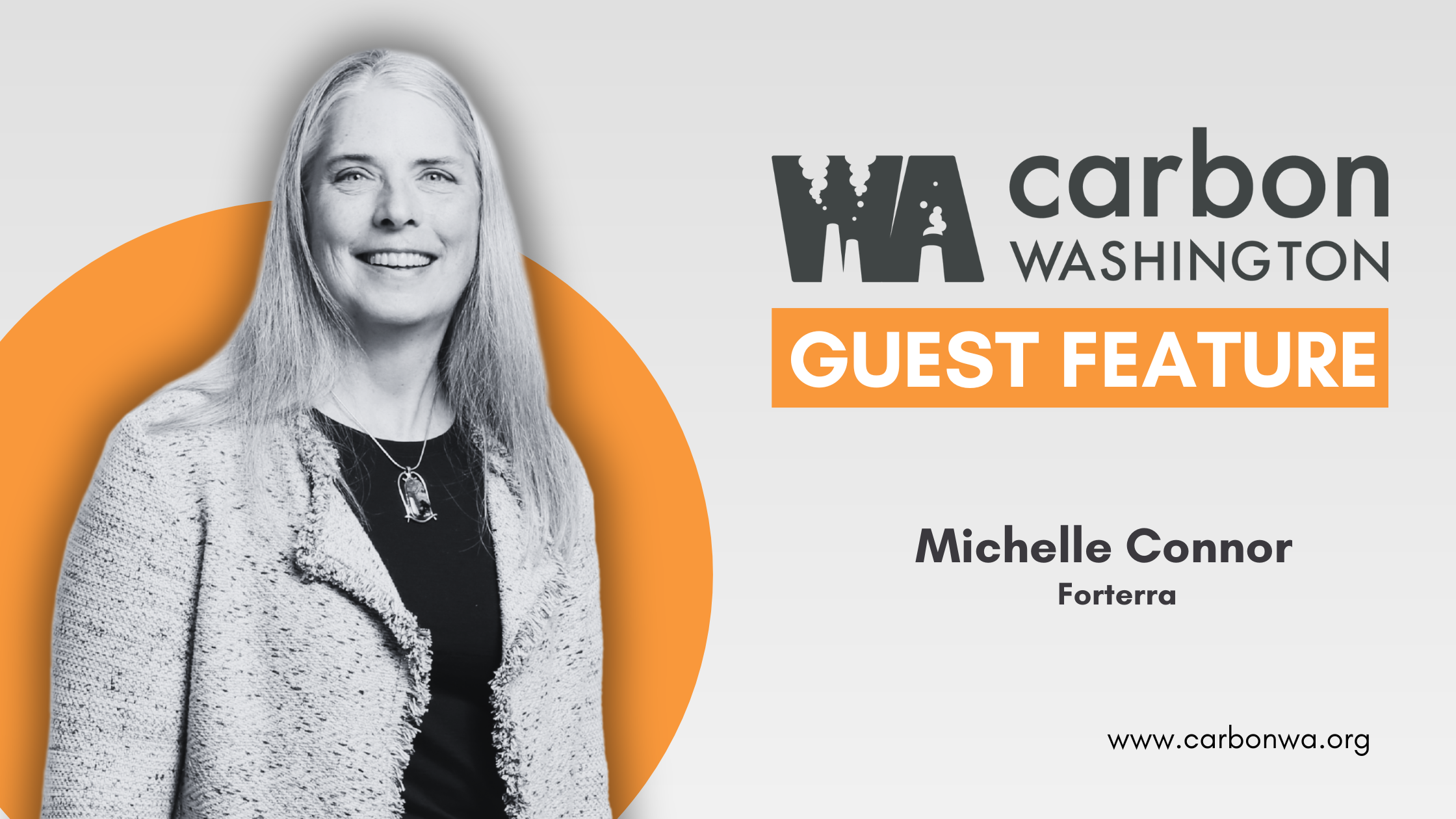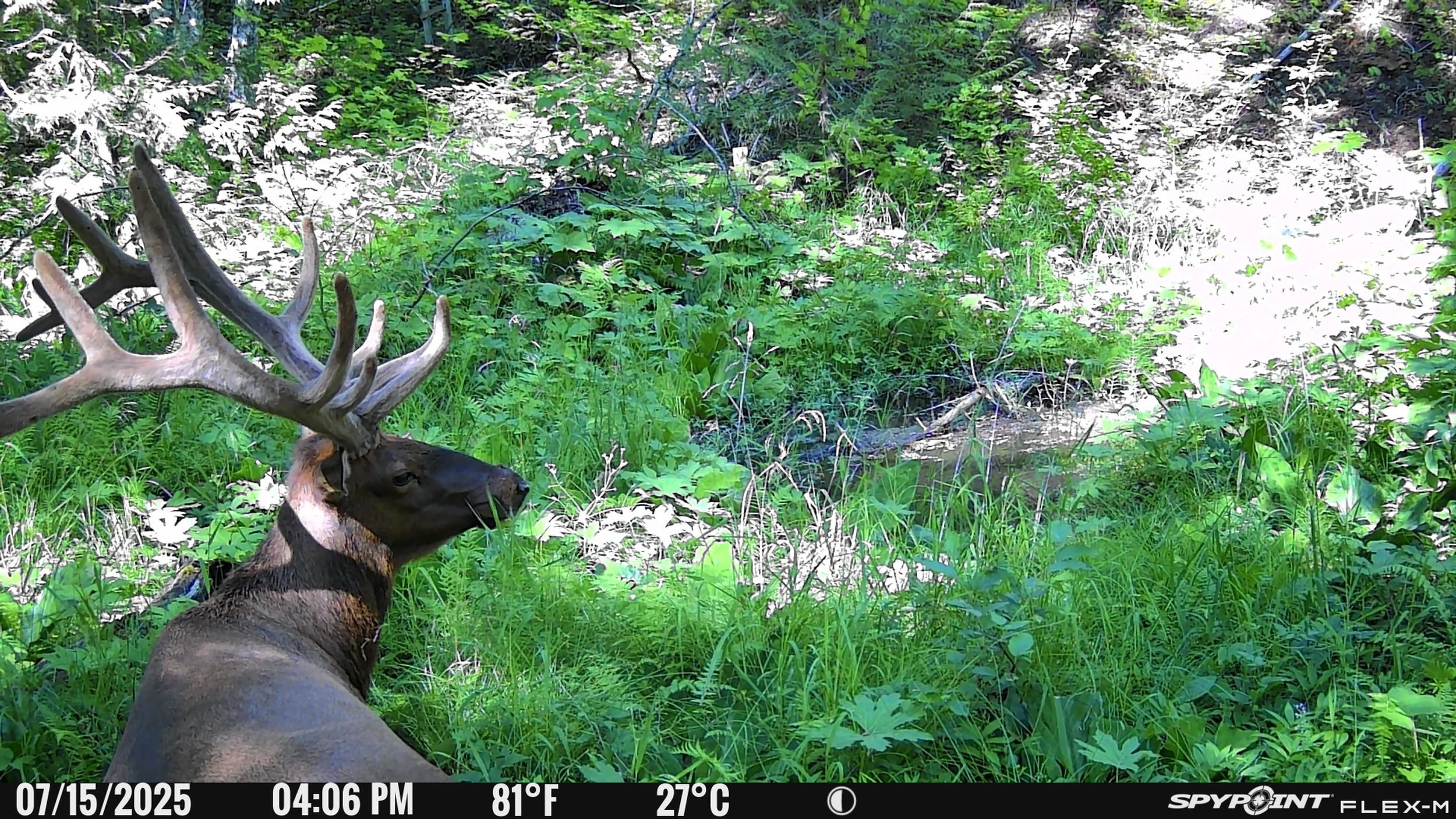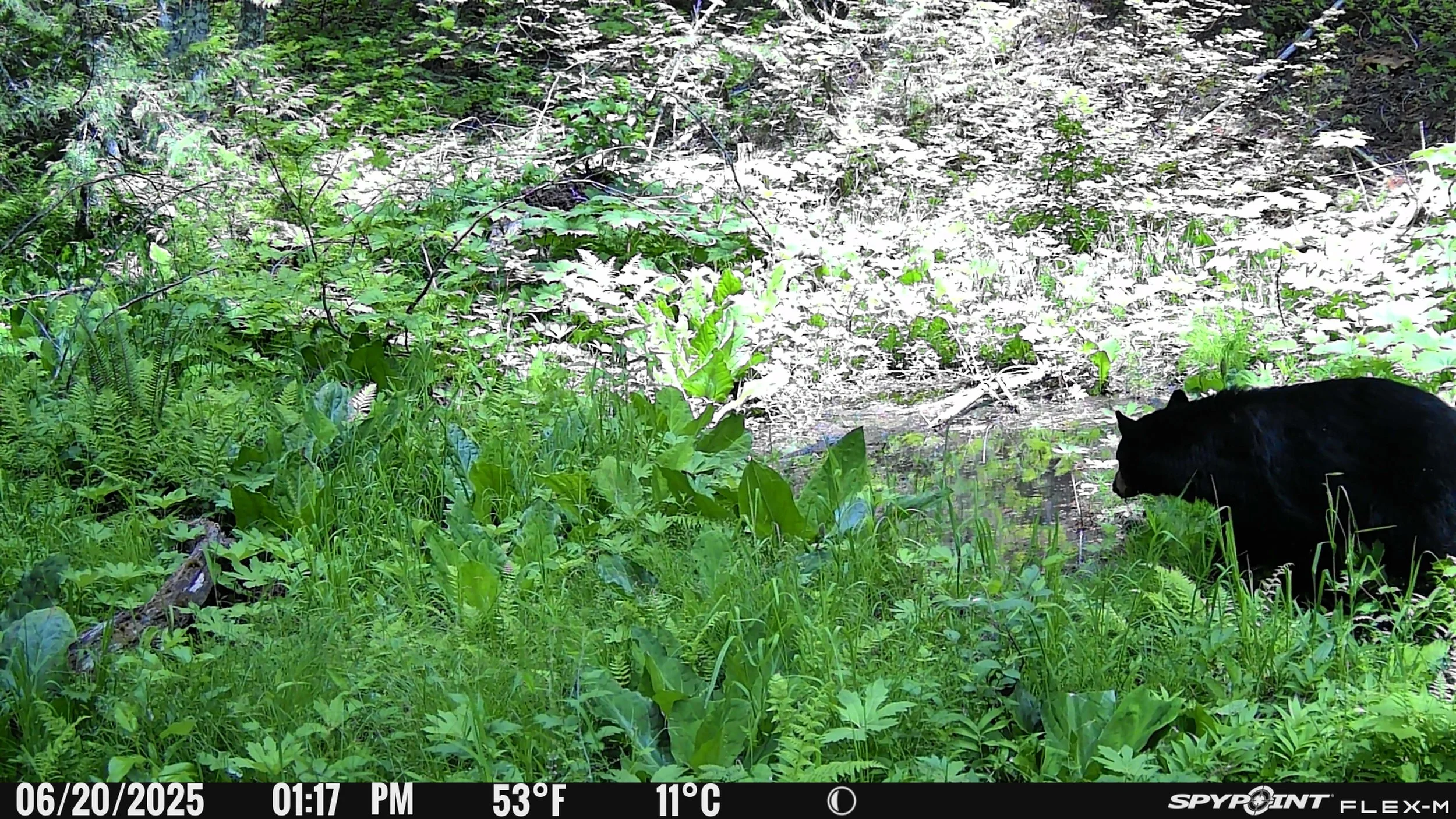Climate, Conservation, and Community: Q&A with Forterra’s President and CEO, Michelle Connor
At Carbon Washington, we believe climate solutions work best when they protect both people and the places we call home. Across Washington, forests, wetlands, farms, and shorelines are natural climate solutions that absorb carbon, protect communities from extreme weather, and preserve our quality of life.
For over three decades, Forterra has been at the forefront of this work—protecting and restoring thousands of acres of wild and working lands across the state. From safeguarding urban green spaces to conserving rural forests and farms, their efforts demonstrate how local land conservation can strengthen statewide climate efforts.
We spoke with Michelle Connor, Forterra’s President and CEO, about the power of land conservation to advance climate action, how collaboration strengthens impact, and what gives her hope for Washington’s path forward.
1. Forterra has protected and restored thousands of acres across Washington. How do you see this kind of land conservation directly influencing the state’s efforts to reduce carbon emissions, and what role could advocacy organizations like Carbon Washington play in supporting these solutions?
When we protect both wild and working lands in urban and rural settings, the benefits multiply. It’s more than conserving swaths of forests to reduce carbon pollution. Conserving parks and trails near where we live reduces carbon emissions – travel distances are shorter, and the temptation of urban sprawl for quality-of-life experiences is lessened. Other benefits are realized when we preserve parcels for affordable housing and community purposes. Outside the cities, when we protect working forests and farms, we prevent natural resource lands from being converted to development.
As pressures grow on our lands, so does the need for advocacy. There can never be too many champions for conservation project funding, especially in today’s political and economic environment. We also need to advocate for development that is compact and affordable. And generate more awareness of not just the environmental benefits but the economic vitality of the working lands in our communities that provide local access to timber and food resources.
2. Forterra’s work focuses on nature-based climate solutions like protecting forests and restoring wetlands. How do these efforts make a difference for local communities right now, beyond their long-term impact on the global climate?
Investments now in nature-based climate actions pay early dividends in reducing the destructive impacts of extreme weather events and wildfires. Environmentally, economically, and for public safety.
There’s often an emphasis on science and data (and politics) when we talk about climate solutions. At our core, we all want the same thing – quality of life – and that’s an immediate benefit when we invest in nature-based climate solutions. We can message that more. We also find that when we talk about protecting forests, shorelines and wetlands, we capture people’s attention and hearts when we tell stories and show images of how this also improves habitat for wildlife.
Caption: An elk and a bear captured up close by Forterra’s Wild Cam at Swamp Lake. Photo courtesy: Forterra
3. Are there any recent or upcoming Forterra projects that you think illustrate how local land conservation can accelerate climate action in Washington?
How we steward our ‘living projects’ can be transformative. A timely Forterra example is this year’s conservation thinning project at Swamp Lake along the I-90 corridor. The early wins are evident from what was an overly dense, wildfire prone and undiversified forest. Now, increased light for young tree seedlings and native shrubs has begun to improve forest health and climate resilience. Wildfire defense is improved for the region identified at highest risk for devastating and deadly wildfires in our state.
4. Both Forterra and Carbon Washington emphasize community-driven approaches. How does Forterra ensure communities are at the center of climate and conservation decisions?
Like Carbon Washington, we strongly believe in the power of people and place. At Forterra, we call this ‘Land for Good,’ driving toward innovative solutions designed to protect community and conservation. By seeking and taking guidance from communities and landowners about their goals for sustainability, we craft strategies that respond to their needs. We work in the space of voluntary incentives and transactions so our projects only progress if there is buy in.
Examples this year include open houses in the town of Hamilton, a rural community of 300 residents that has suffered from frequent, sometimes devasting, flooding since its incorporation in 1891. A Washington Department of Ecology grant funds our community engagement, purchasing properties from willing sellers, removing old structures, and assisting with relocation to move out of harm’s way. Similar efforts are underway in the Chehalis Basin.
The emphasis is on ‘voluntary’. If residents are interested, we’re here to help. We’ve also held a series of community meetings in Roslyn on plans to clean up an historic mine site for new community benefits. Their feedback, through multiple outreach avenues, directly shapes how we move forward.
5. What kinds of collaborations between conservation organizations and climate advocacy groups do you think can drive sustainable change at the state level?
It takes all of us. Not just on physical land protection and community restoration, but on collaborative strategies and new local and state policies.
The sense of urgency also must be coupled with patience and persistence. It’s impactful to highlight success stories with communities and policy leaders where changes are making a difference. We build momentum for climate progress.
Something coming up that we’re especially enthused about is our Evergreen Restoration Program plan to collaborate with community organizations to increase tree canopy in urban heat islands. It’s another example of creating climate resilience while enhancing quality of life.
6. Looking ahead, what gives you hope about Washington’s ability to meet its climate goals through nature-based solutions?
Like our landscapes, hope can also grow wild. The Pacific Northwest is special, not just for our forests, mountains and water, but because of our grit in problem solving. We take charge of our own destiny through direct and local actions that define the future we want. These local climate actions build and reverberate.
While we live in unprecedented times, I am hopeful because of our state's history of entrepreneurial solutions, the willingness of people to care about and hear each other’s needs, our collective love for this place.



